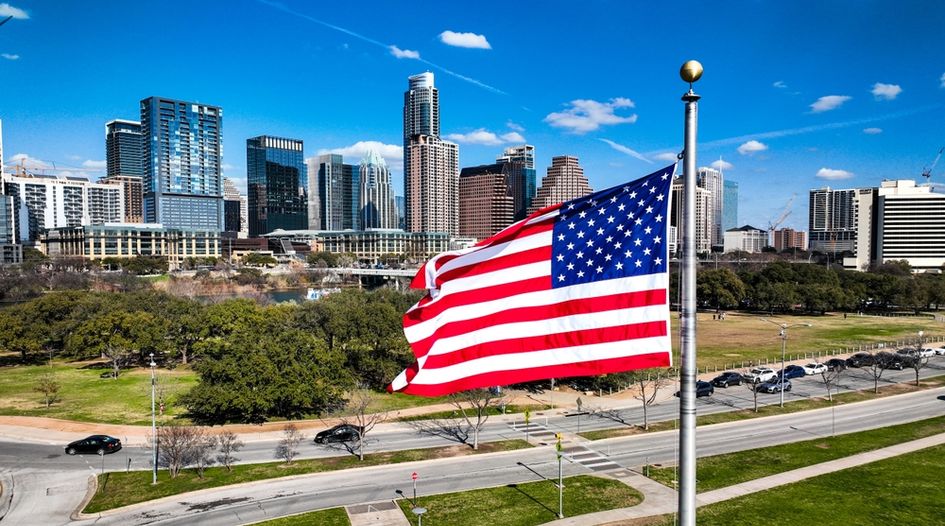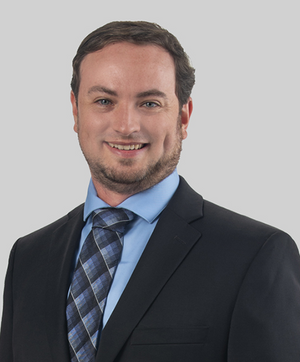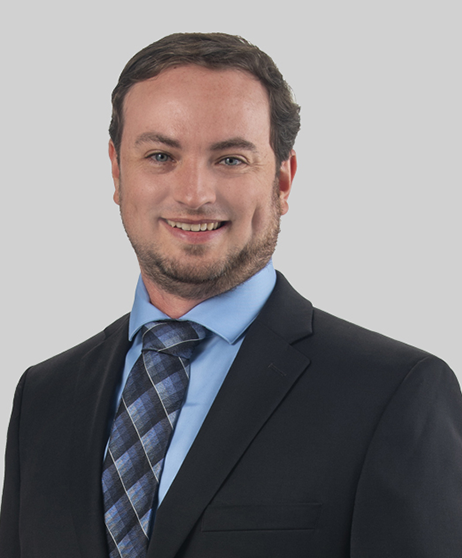How to navigate the biosimilar and biologic markets amid challenging US litigation trends

This is an Insight article, written by a selected partner as part of IAM's co-published content. Read more on Insight
A slew of recent litigation in the biologics and biosimilars space (including a high-profile decision in Amgen Inc v Sanofi by the US Supreme Court) has drastically changed the landscape of this space and made it more challenging for biopharma companies and IP professionals.
The biologics market was valued at US$264 billion in 2021 and is expected to reach US$596.65 billion by 2029. The first biosimilar was approved by the US Food and Drug Administration (FDA) nearly eight years ago. A biosimilar is a biologic treatment (ie, made from living cells) that is just as safe and effective as an existing FDA-approved biologic, also referred to as the ‘reference product’. As of 15 May 2023, there are 40 FDA-approved biosimilars, 27 of which are available in the US market and four of which are interchangeable biosimilars. These FDA-approved biosimilars are as follows (* denoting interchangeable biosimilars):
| Biosimilar product information | FDA | ||
|---|---|---|
| Biosimilar name | Approval date | Reference product |
| Idacio (adalimumab-aacf) | December 2022 | Humira (adalimumab) |
| Vegzelma (bevacizumab-adcd) | September 2022 | Avastin (bevacizumab) |
| Stimufend (pegfilgrastim-fpgk) | September 2022 | Neulasta (pegfilgrastim) |
| Cimerli (ranibizumab-eqrn)* | August 22 | Lucentis (ranibizumab) |
| Fylnetra (pegfilgrastim-pbbk) | May 2022 | Neulasta (pegfilgrastim) |
| Alymsys (bevacizumab-maly) | April 2022 | Avastin (bevacizumab) |
| Releuko (filgrastim-ayow) | February 2022 | Neupogen (filgrastim) |
| Yusimry (adalimumab-aqvh) | December 2021 | Humira (adalimumab) |
| Rezvoglar (insulin glargine-aglr)* | December 2021 | Lantus (insulin glargine) |
| Byooviz (ranibizumab-nuna) | September 2021 | Lucentis (ranibizumab) |
| Semglee (Insulin glargine-yfgn)* | July 2021 | Lantus (Insulin glargine) |
| Riabni (rituximab-arrx) | December 2020 | Rituxan (rituximab) |
| Hulio (adalimumab-fkjp) | July 2020 | Humira (adalimumab) |
| Nyvepria (pegfilgrastim-apgf) | June 2020 | Neulasta (pegfilgrastim) |
| Avsola (infliximab-axxq) | December 2019 | Remicade (infliximab) |
| Abrilada (adalimumab-afzb) | November 2019 | Humira (adalimumab) |
| Ziextenzo (pegfilgrastim-bmez) | November 2019 | Neulasta (pegfilgrastim) |
| Hadlima (adalimumab-bwwd) | July 2019 | Humira (adalimumab) |
| Ruxience (rituximab-pvvr) | July 2019 | Rituxan (rituximab) |
| Zirabev (bevacizumab-bvzr) | June 2019 | Avastin (bevacizumab) |
| Kanjinti (trastuzumab-anns) | June 2019 | Herceptin (trastuzumab) |
| Eticovo (etanercept-ykro) | April 2019 | Enbrel (etanercept) |
| Trazimera (trastuzumab-qyyp) | March 2019 | Herceptin (trastuzumab) |
| Ontruzant (trastuzumab-dttb) | January 2019 | Herceptin (trastuzumab) |
| Herzuma (trastuzumab-pkrb) | December 2018 | Herceptin (trastuzumab) |
| Truxima (rituximab-abbs) | November 2018 | Rituxan (rituximab) |
| Udenyca (pegfilgrastim-cbqv) | November 2018 | Neulasta (pegfilgrastim) |
| Hyrimoz (adalimumab-adaz) | October 2018 | Humira (adalimumab) |
| Nivestym (filgrastim-aafi) | July 2018 | Neupogen (filgrastim) |
| Fulphila (pegfilgrastim-jmdb) | June 2018 | Neulasta (pegfilgrastim) |
| Retacrit (epoetin alfa-epbx) | May 2018 | Epogen (epoetin-alfa) |
| Ixifi (infliximab-qbtx) | December 2017 | Remicade (infliximab) |
| Ogivri (trastuzumab-dkst) | December 2017 | Herceptin (trastuzumab) |
| Mvasi (Bevacizumab-awwb) | September 2017 | Avastin (bevacizumab) |
| Cyltezo (Adalimumab-adbm)* | August 2017 | Humira (adalimumab) |
| Renflexis (Infliximab-abda) | May 2017 | Remicade (infliximab) |
| Amjevita (Adalimumab-atto) | September 2016 | Humira (adalimumab) |
| Erelzi (Etanercept-szzs) | August 2016 | Enbrel (etanercept) |
| Inflectra (Infliximab-dyyb) | April 2016 | Remicade (infliximab) |
| Zarxio (Filgrastim-sndz) | March 2015 | Neupogen (filgrastim) |
Current state of US biosimilar market
Biosimilar advancements in the United States began when the Biologics Price Competition and Innovation Act (BPCIA) was enacted in 2010, which established an abbreviated pathway to FDA approval for biosimilars under section 351K, with the aim of enabling greater patient access to lower cost, high-quality products. The approval process requires biosimilar manufacturers to submit data that demonstrates there is no clinically meaningful difference from the reference biologic. Although the approval pathway for biosimilars is abbreviated, the FDA requires biosimilars to meet equally rigorous approval standards, which means patients and healthcare professionals can be assured of their safety, efficacy and quality – just as they would the reference products.
To dance or not to dance: biosimilar strategies
The patent dance is a part of the biosimilar approval pathway that allows both the originator company and the biosimilar company to exchange information relevant to the patents on the reference product that might be infringed by marketing of the proposed biosimilar.
The patent dance is intended to streamline and formalise the exchange of information and cut down on needless litigation that might delay the introduction of cost-saving biosimilars. The steps in the patent dance are:
- the FDA accepts a biosimilar application;
- the biosimilar applicant has 20 days to notify the reference product sponsor (RPS) that the FDA has accepted the biosimilar application;
- within 60 days of notification, the RPS must provide the biosimilar applicant with a list of patents that might be infringed;
- within 60 days of receiving that list, the biosimilar applicant must provide a list of potential patents for resolution and its defence;
- the RPS must respond within 60 days with an infringement analysis for those patents;
- both parties then have 15 days to negotiate patents to be included in the first round of litigation; and
- the RPS may file a patent infringement lawsuit within 30 days asserting the agreed patents.
In 2017, the Supreme Court of the United States issued a unanimous (9–0) opinion in Sandoz v Amgen, 137 S Ct 1664 (2017), a highly anticipated case concerning key provisions of the BPCIA, part of the larger Patient Protection and Affordable Care Act of 2009.
At the heart of this decision lay a fight between two major biopharmaceutical manufacturers over claims of patent infringement brought by Amgen Inc against Sandoz Inc on a blockbuster drug representing hundreds of millions of dollars in sales each year. Amgen has marketed filgrastim, a synthetically produced therapeutic protein, under the trade name Neupogen since 1991, when it was approved for use by the FDA. In 2014, Sandoz sought FDA approval for a compound biosimilar to filgrastim, dubbed filgrastim-sndz, under the trade name Zarxio.
Notably, Sandoz sought FDA approval for Zarxio under the BPCIA, which sets forth regulations concerning an abbreviated approval pathway for FDA approval of biosimilar compounds, as well as the procedural framework concerning patent litigation that arises from the filing of an application for a biosimilar compound. These patent regulations are often referred (as above) to as the ‘patent dance’ due to the back-and-forth nature of sharing patent lists, confidential information and resolution negotiations between the biosimilar applicant (termed ‘subsection (k) applicant’ in the statute) and the patent holder (reference product sponsor or RPS in the statute).
The two provisions of the BPCIA at issue in Sandoz v Amgen involved the mandatory nature (or lack thereof) of participating in the patent dance and what remedies exist for failing to participate, as well as the timing of obtaining licensure (approval) by the FDA for the biosimilar, involving issues of providing notice of commercial marketing by the biosimilar applicant. Regarding the patent dance, the BPCIA provides in part that the biosimilar applicant shall provide to the patent holder ‘a copy of the [biosimilar] application’ and ‘such other information that describes the process or processes used to manufacture the biological product’ (42 USC § 262(l)(2)(A)). Regarding the notice of commercial marketing, the BPCIA provides that the biosimilar applicant shall provide notice to the patent holder ‘no later than 180 days before the date of the first commercial marketing of the biological product licensed under subsection (k)’ (42 USC § 262(l)(8)(A)). The BPCIA is silent as to whether the notice of commercial marketing may occur prior to FDA approval, or if it may only occur after.
On the issues of the patent dance and commercial marketing, the Supreme Court held that participating in the patent dance is optional. The applicant has the option of participating in the patent dance, but if they do not, the only negative consequence is that the applicant loses the right to file a declaratory judgment action on invalidity and the sponsor now can sue the applicant where and when for infringement and pursue damages the sponsor could not get if the applicant pursues the dance. Notice of commercial marketing may be given prior to, or after, FDA approval. Thus, the incentive given the potential sales is to just go to market.
Overall, the Supreme Court handed biosimilar applicants a major and decisive victory by siding with Sandoz. The biggest benefit to biosimilar applicants is almost certainly the holding that notice of commercial marketing may be given prior to FDA approval. As previously noted, had the Supreme Court sided with Amgen, the regulatory exclusivity for biologics, such as filgrastim, would have been extended by an extra half year (180 days), which could have meant tens to hundreds of millions of dollars in lost revenue for the biosimilar applicant.
For example, after the first four months on the market, Zarxio had taken nearly a quarter share of the market. Regarding the patent dance, the biosimilar applicant may decide not to engage in a framework that invariably delays FDA approval of their abbreviated biologics licence application (BLA) while the parties litigate patents before a bench trial in the Phase I. Even if the biosimilar applicant prevails in Phase I litigation, the RPS can still file a second lawsuit (Phase II) with any remaining patents not litigated in Phase I, potentially further delaying the launch of the abbreviated BLA. The patent dance usually provides benefits to abbreviated BLA applicants who face many multitudes of potential patents because the exchange of information provided by this mechanism allows the applicant to have a better understanding of the potential patent challenges. However, for abbreviated BLA applicants who already believe they have a sophisticated understanding of the RPS’s patents, the patent dance may have less appeal. By allowing the patent dance to be optional, the Supreme Court essentially allows biosimilar applicants to direct the course of patent litigation. They may choose to either follow the framework and receive some of the benefits involved, such as controlling patent lists and gaining potentially greater regulatory exclusivity for the biosimilar (if interchangeable) or ignore the framework entirely and either defer or speed up the patent litigation, or seek alternate venues such as an inter partes review (IPR), depending on the circumstances.
Impact of inter partes reviews, post-grant reviews and the Biologics Price Competition and Innovation Act
Patent protection is a significant consideration for biosimilars entering the US market. There are a variety of ways patent disputes proceed in the United States, including IPRs and post-grant reviews (PGRs) at the United States Patent and Trademark Office (USPTO), and litigation under the BPCIA, often referred to as the patent dance, where biosimilar manufacturers and reference product sponsors exchange patent validity and infringement information prior to filing a lawsuit in district court. All these mechanisms have the goal of an early resolution of patent disputes prior to biosimilars coming on the market.
As of 15 May 2023, there have been 144 biosimilar-related IPRs encompassing 70 patents and 14 reference products and there have been 46 BPCIA litigations related to 12 reference products. PGRs have not been a preferred way of resolving biosimilar-related patent disputes, with only three biosimilar-related PGR filings to date, possibly because of the far-reaching risks of estoppel based on final decisions that are based on PGRs and the fact that PGRs need to be instituted within nine months of issuance of the patent. While many of the reference product sponsors have faced both IPRs and litigation related to their patents, some biologic patents have only faced one type of challenge.
Each biosimilar reaches the market through a different path, be it through IPRs, litigation, settlements or a combination of the above. Only a few biologic patents have been invalidated in the USPTO through IPR and PGR proceedings, as well as district court litigation. Also of note, the BPCIA dispute resolution process has not been a significant barrier for many biosimilars.
US biosimilar litigation trends
There have been nine BPCIA cases involving five reference products that have concluded either with infringement or validity determinations by the court (seven) or through stipulated judgments of non-infringement by the parties (two). Of these nine cases, three were resolved in the RPS’s favour with resulting damages (one) and permanent injunctions (two), with the remaining six resulting in a finding that the patents remaining at issue were not infringed by the biosimilar.
The fact that the favourable outcomes for biosimilars typically did not find patents invalid is interesting, particularly because some have suggested that weak drug patents are keeping biosimilars off the market. That has not proven to be true in the BPCIA litigation context based on the outcomes to date.
IPRs are a less expensive alternative to litigation and avoid resource-intensive litigation for biosimilars. To date, seven biosimilars of six reference products have successfully negotiated settlements after bringing IPRs, prior to any litigation being filed. This includes the Humira biosimilar Yusimry, Neulasta (pegfilgrastim) biosimilars Stimufend and Fylnetra, Rituxan (rituximab) biosimilar Ruxience, Herceptin (trastuzumab) biosimilar Ogivri, Soliris (eculizumab) proposed biosimilar ABP 959 (not yet approved) and Actemra (tocilizumab) proposed biosimilar MSB11456 (not yet approved).
While at least 11 of the 27 launched biosimilars (40.7 per cent) launched at-risk to at least some degree, to date, none of them have been ordered to pay any damages. While there has been one BPCIA litigation resulting in a damages award, it dealt with pre-launch manufacturing batches that were not found to be covered by 35 USC § 271(e)’s safe harbour and was not the result of an at-risk launch into the US market.
Some of the at-risk launches took place after an initial decision in the biosimilar’s favour before appeals were exhausted, but some took place earlier in litigation. Ultimately, at-risk launches have eventually resulted in settlements in most cases.
While IPRs are a potential way to bring about an early resolution to patent disputes, some biosimilars have avoided patent disputes altogether by settling prior to the filing of any IPRs or litigation in the United States. To date, there have been at least nine biosimilar settlements without a patent dispute in the patent office or district court, including: Humira biosimilars Hadlima, Abrilada, Hulio, Idacio and Yuflyma; Lucentis (ranibizumab) biosimilars Byooviz and Cimerli; Rituxan biosimilar Riabni; and Avastin (bevacizumab) biosimilar Vegzelma. There have been two additional biosimilars launched without patent disputes or announcements of a settlement agreement, including Avastin biosimilar Alymsys and Remicade (infliximab) biosimilar Avsola.
It is possible that some of these biosimilars began the patent dance and negotiated settlements during the process, which is a benefit to the early back-and-forth between the RPS and biosimilar manufacturer and has potentially led to deals between these companies that has kept them out of court.
Overall, 18 biosimilars have launched or negotiated a future launch without litigation. One company in particular, Fresenius Kabi, has negotiated settlements for all of its three approved or pending biosimilars (Stimufend, MSB11456 and Idacio) without facing litigation in the United States.
Pending and resolved patent litigation
This past year, there were four new patent lawsuits. The cases ranged in how much the parties took part in the patent dance: two of the cases went through all steps of the patent dance process (Regeneron Pharmaceuticals, Inc v Mylan Pharmaceuticals, Inc (1:22-cv-00061), West Virginia Northern District Court and Genentech, Inc v Tanvex BioPharma USA, Inc et al (3:22-cv-00809), Southern District of California; one case went through some of the steps (Biogen Inc and Biogen MA Inc v Sandoz Inc, Sandoz GmbH, Sandoz International GmbH and Polpharma Biologics SA (1:2022-cv-01190), District of Delaware) and one went through none (Janssen Biotech, Inc v Amgen Inc (1:22-cv-01549), District of Delaware).
The Regeneron v Mylan case resulted in a scheduled trial for June 2023. The current standing of the Biogen v Sandoz/Polpharma Biologics case is that the parties have jointly requested an expedited preliminary injunction proceeding. In the Genentech v Tanvex case, the parties settled in January 2023. The Janssen v Amgen case was filed in November 2022 and the parties settled on 22 May 2023.
Patenting biologics: requirements
To obtain a patent, an inventor must meet a number of requirements. For biologics, three of these can be particularly tricky to meet: patent-eligible subject matter, enablement and written description.
Patent eligibility
Laws of nature and natural phenomena are fundamentally not patent eligible, such as physical, chemical and biological principles and naturally occurring compounds. First, the court looks to whether the claims are directed to patent-ineligible subject matter, such as laws of nature, natural phenomena or abstract ideas. See Alice Corp Pty Ltd v CLS Bank Int’1, 134 S Ct 2347, 2354 (2014). Second, the court must determine whether the application is patent eligible by considering ‘the elements of each claim both individually and ‘as an ordered combination’ to determine whether the additional elements ‘transform the nature of the claim’ into a patent-eligible application’ (Alice, 134 S Ct at 2355). Put another way, there must be a further inventive concept to take the claim into the realm of patent eligibility.
‘Prometheus’ patents set forth laws of nature – namely, relationships between concentrations of certain metabolites in the blood and the likelihood that a dosage of a thiopurine drug will prove ineffective or cause harmful side effects’ (Mayo Collaborative Servs v Prometheus Labs, Inc, 566 US 66, 77 (2012)). The Supreme Court then asked, ‘do the patent claims add enough to their statements of the correlation to allow the processes they describe to qualify as patent-eligible processes that apply natural laws?’ (Mayo Collaborative Servs v Prometheus Labs, Inc). The Supreme Court held that the claimed steps of administering, determining and wherein did not sufficiently transform the nature of the claims to render them patent eligible.
‘Myriad discovered the precise location and sequence of human genes, mutations of which can increase the risks of breast and ovarian cancer’ (Association for Molecular Pathology v Myriad Genetics, Inc, 569 US 576, 582-83 (2013)). The Supreme Court queried whether the naturally occurring DNA was patent eligible, ‘by virtue of its isolation from the rest of the human genome?’ (Myriad, 569 US at 580). The Supreme Court held that it was not. What about synthetically created DNA, such as complementary DNA or cDNA? The Supreme Court held that it was patent eligible. ‘cDNA cannot be isolated from nature, but instead must be created in the laboratory . . . because the introns that are found in the native gene are removed from the cDNA segment’ (Myriad, 569 US at 588).
Enablement
Under 35 USC § 112(a), first paragraph, the specification must describe how to make and how to use the invention. Why is this necessary? To weed out inventions that cannot be made or used. The test is ‘whether one reasonably skilled in the art could make or use the invention from the disclosures in the patent coupled with information known in the art without undue experimentation’ (United States v Telectronics, Inc, 857 F 2d 778, 785 (Fed Cir 1988)), considering the Wands factors (In re Wands, 858 F 2d 731, 737 (Fed Cir 1988)).
The Wands factors include:
- the breadth of the claims;
- the nature of the invention;
- the state of the prior art;
- the level of one of ordinary skill in the art;
- the level of predictability in the art;
- the amount of direction provided by the inventor;
- the existence of working examples; and
- the quantity of experimentation needed to make or use the invention based on the content of the disclosure.
Genentech, Inc v Novo Nordisk A/S, 108 F 3d 1361 (Fed Cir 1997) involved a patent directed to a method for cleavable fusion expression of human growth hormone (hGH). In the claimed process, hGH is produced in cleavable conjugate form, wherein the conjugate is cleaved enzymatically outside the cell. The Federal Circuit ruled that claim was not enabled for cleavable fusion expression. ‘To be enabling, the specification of a patent must teach those skilled in the art how to make and use the full scope of the claimed invention without “undue experimentation”’ (Genentech, Inc v Novo Nordisk A/S at 1365).
Bio-Technology Gen Corp v Genentech, Inc, 267 F 3d 1325 (Fed Cir 2001) involved a patent directed to a method for producing hGH using the recombinant techniques of bacterial production and gene expression. In the claimed process, hGH is produced with a methionine leader amino acid, resulting in a 192-amino-acid sequence ‘met-hGH’. According to the ‘980 patent, the methionine sequence is thought to be cleaved within bacteria, resulting in the native 191-amino-acid sequence or ‘mature hGH’. According to evidence submitted in BTG’s ANDA to the FDA, hGH made by the process of the ‘980 patent contains 93.8 per cent met-hGH and 6.2 per cent mature hGH. At the district court, a jury had found that the claim was enabled. However, the district court granted judgment as a matter of law (JMOL) for invalidity, setting aside the jury’s ruling. The Federal Circuit ruled that claim construction did not require that mature hGH would need to be produced in a substantial amount or in exclusion of met-hGH for claim two to be enabled. Moreover, the Federal Circuit found that the jury’s verdict had been supported by substantial evidence and could have been reached by a reasonable jury. As such, the Federal Circuit vacated the JMOL and reinstated the jury verdict.
In Amgen Inc v Sanofi (2023), at issue was whether a valid patent can cover all the members of an identified group or if it is limited to only those members of the group specified by the patent owner. Amgen sued Sanofi and Regeneron in 2014 for patent infringement over Praluent. Both drugs use laboratory-made antibodies to block a protein called PCSK9 that inhibits the removal of bad cholesterol from the blood, but they achieve this result through different chemical combinations. Bad cholesterol, known as LDL, can cause a build-up of plaque in blood vessels and increase the risk of heart disease and stroke.
Relying on rulings from the turn of the 20th century related to the telegraph, incandescent lamp and wood veneer, the court reinforced the applicability of section 112 of the Patent Act’s longstanding enablement requirement in the modern context of antibody development. The court reiterated that section 112(a) ‘requires a specification to include “a written description of the invention, and of the manner and process of making and using it, in such full, clear, concise, and exact terms as to enable any person skilled in the art . . . to make and use the same”’. This requirement that a patent application be sufficiently enabled is essential to secure for the general public ‘its benefit of the patent bargain by ensuring that, “upon the expiration of [the patent], the knowledge of the invention [i]nures to the people, who are thus enabled without restriction to practice it”’.
The court summarised its longstanding enablement jurisprudence succinctly: ‘[i] other words, the specification must enable the full scope of the invention as defined by its claims. The more one claims, the more one must enable’.
The court then applied these principles in the modern context of antibody development. Both Amgen and Sanofi hold patents that describe relevant PCSK9-targeting antibodies by their amino acid sequences; these patents were not at issue here. What was at issue were particular claims of two additional patents held by Amgen that ‘did not seek protection for any particular antibody described by amino acid sequence. Instead, Amgen purported to claim for itself “the entire genus” of antibodies that (1) “bind to specific amino acid residues on PCSK9” and (2) “block PCSK9 from binding to [LDL receptors]”’.
Although the court readily found that Amgen’s specification enabled 26 exemplary antibodies it identified by their amino acid sequences in these two patents, the court rejected Amgen’s arguments that it had enabled its broad functional claims ‘because scientists can make and use every undisclosed but functional antibody if they simply follow [Amgen’s] “roadmap” or its proposal for “conservative substitution”’. The court held these two approaches described by Amgen to ‘amount to little more than two research assignments . . . fail[ing] to enable all that [Amgen] has claimed, even allowing for a reasonable degree of experimentation’. The court further rejected Amgen’s additional arguments that the Federal Circuit had applied a different enablement standard in the context of antibody patents than in other contexts and that such a narrow interpretation would risk ‘destroy[ing] incentives for breakthrough inventions’.
On the other hand, the court also clarified ‘[a]ll this is not to say a specification always must describe with particularity how to make and use every single embodiment within a claimed class. It may suffice to give an example if the specification also discloses “some general quality . . . running through” the class that gives it “a peculiar fitness for the particular purpose”. . . Nor is a specification necessarily inadequate just because it leaves the skilled artist to engage in some measure of adaptation or testing”’.
This high-profile ruling applies long-standing principles of patent law to the modern context of antibody development. As such, the implications of this case are of immense significance for the US biopharmaceutical industry.
Written description
Under 35 USC § 112(a), first paragraph: the specification must ensure that the inventor had possession of the specific subject matter later claimed as of the filing date of the application. This is required to give others incentive to continue to invent. The test is whether the disclosure of the application ‘reasonably conveys to the artisan that the inventor had possession at that time of the later claimed subject matter’. Ralston Purina Co v Far-Mar-Co, Inc, 772 F 2d 1570, 1575, 227 USPQ 177, 179 (Fed Cir 1985). The specification must show either representative species or structural features. Relevant cases are recited as follows:
- Fiers v Revel et al, v Sugano, 984 F 2d 1164 (Fed Cir 1993);
- Regents of the Univ of California v Eli Lilly & Co, 119 F 3d 1559 (Fed Cir 1997);
- Univ of Rochester v GD Searle & Co, 358 F 3d 916 (Fed Cir 2004);
- Ariad Pharms, Inc v Eli Lilly & Co, 598 F 3d 1336 (Fed Cir 2010) (en banc));
- Centocor Ortho Biotech, Inc v Abbott Laboratories, 636 F 3d 1341 (Fed Cir 2011);
- AbbVie Deutschland GmbH & Co, KG v Janssen Biotech, Inc, 759 F 3d 1285 (Fed Cir 2014); and
- Juno Therapeutics, Inc v Kite Pharma, Inc, 10 F 4th 1330, 1342 (Fed Cir 2021), cert denied.
Fiers was a lengthy and highly publicised US patent interference proceeding involving the patent rights to the DNA sequence coding for Interferon-beta, in which the Federal Circuit affirmed the application of the principle of simultaneous conception and reduction to practice to genetic material. An adequate description of DNA requires a description (structure or nucleotide sequence) of the DNA itself.
In Lilly, the Federal Circuit held that University of California’s patents failed to meet the written description requirement for a claimed broader genus of vertebrate and mammal insulin cDNAs since they only described a rat proinsulin cDNA. A genus is not adequately described by simply describing a species of that genus, but ‘a description of a genus of cDNAs may be achieved by means of recitation of a representative number of cDNAs’ (Lilly, 119 F 3d at 1569).
In Searle, the University of Rochester sued for patent infringement based on anti-inflammation drugs Celebrex and Bextra targeting COX-2, a type of cyclooxygenase, by GD Searle & Co, Inc, Monsanto Co, Pharmacia Corp and Pfizer Inc. The University of Rochester developed a screening assay for determining whether a particular drug selectively inhibited the activity of COX-2 and obtained a US patent covering methods for selectively inhibiting COX-2 activity in a human host by administering a non-steroidal compound that selectively inhibits the activity. The University of Rochester’s patent was invalidated for failing to comply with the written description requirement.
In Ariad, a claim was directed to a method for reducing, in eukaryotic cells, the level of expression of genes that are activated by extracellular influences that induce NF-κB-mediated intracellular signalling, the method comprising reducing NF-κB activity in the cells such that expression of said genes is reduced, carried out on human cells. Ariad had not described any molecules that could do the many things the claims said. The vague functional descriptions were essentially just invitations for skilled artisans to conduct further research and therefore were not sufficient to meet the written description requirement. The specification disclosed three classes of compounds that could be used in the claimed methods; however, it only disclosed examples of one of the classes of compounds and did not disclose any examples of the described compounds actually linked to use in the claimed method.
In Centocor, Centocor identified a murine antibody to human TNF-α and then modified the murine antibody to make it look like a human antibody. The resulting product was a chimeric antibody that was not fully human, but Centocor nevertheless obtained US Patent 7,070,775 with claims covering fully human antibodies. Abbott constructed a fully human antibody from scratch using a phage display library containing a spectrum of human variable regions. The Federal Circuit stated ‘the fact that a fully human antibody could be made does not suffice to show that the inventors of the ‘775 patent possessed such an antibody . . . The specification at best describes a plan for making fully human antibodies and then identifying those that satisfy the claim limitations. But a “mere wish or plan” for obtaining the claimed invention is not sufficient’ (Centocor, 636 F 3d at 1350-51).
In AbbVie Deutschland GmbH, AbbVie filed suit against Janssen Biotech, Inc and Centocor Biologics, LLC for infringement of claims directed to a neutralising isolated human antibody or antigen-binding portion thereof that binds to human IL-12 and disassociates from human IL-12 with a koff rate constant of 1x10-2 s-1 or less, as determined by surface plasmon resonance. The Federal Circuit held that claims were invalid for lack of written description. There are eight isotypes of variable heavy chains (VH1-8) and two isotypes of variable light chains (VL κ or λ) in any antibody. The antibodies AbbVie disclosed all had VH3 heavy chains and λ light chains and at least 90 per cent amino acid sequence similarity in their variable regions. Centocor’s hIL-12 antibody (Stelara) had VH5 heavy chains and κ light chains and about 50 per cent sequence similarity in the variable regions to Abbivie’s.
In Juno, the patent to Juno at issue related to chimeric antigen receptor (CAR) T-cell therapy. Juno sued Kite for infringement of claims directed to a nucleic acid polymer encoding a chimeric T cell receptor. The chimeric T cell receptor comprises, among others, ‘a binding element that specifically interacts with a selected target’. One type of the binding element disclosed by Juno is single-chain antibody variable fragments (scFvs). Following a trial in the Central District Court of California, a jury found no issue of written description and found Kite wilfully infringed the patent. The district court agreed and awarded Juno a damage of about US$1.2 billion and an ongoing royalty of 27.6 per cent. However, on appeal, the Federal Circuit reversed and invalidated Juno’s patent claims for lack of written description. Noting the Juno patent disclosed two scFvs while ‘the claims cover an enormous number (millions of billions) of scFv candidates,’ the Federal Circuit concluded the Juno patent ‘does not disclose representative species or common structural features to allow a person of ordinary skill in the art to distinguish between scFvs that achieve the claimed function and those that do not’.
These court decisions regarding enablement and written description have reshaped the landscape of the biologics and biosimilars space drastically. While they provide biosimilar applicants with more opportunities and ammunition to challenge RPS patents, they have also made it more challenging for bio-pharma companies and IP professionals.
Conclusion
President Biden signed the Inflation Reduction Act (IRA) into law on 16 August 2022. With a robust set of funding, the Act incorporates several of President Biden’s domestic policy priorities and sweeping reforms to many areas, including healthcare reform. In that regard, it is the federal government’s ability to negotiate pharmaceutical prices for Medicare. The negotiation methodology has many aspects, but at interest on this topic is that biologics that have been on the market for at least 13 years will be subject to negotiation starting in 2026 for Medicare Part D drugs and 2028 for Part B drugs. Of note, however, is that certain branded reference products may petition to be excluded from negotiation if a biosimilar is anticipated to come to market within two years. The cases discussed above emphasise the variability in potential estimates of timelines for biosimilar market availability. The question remains, will the IRA succeed as intended and protect and foster the growing biosimilar market? Time will tell.










